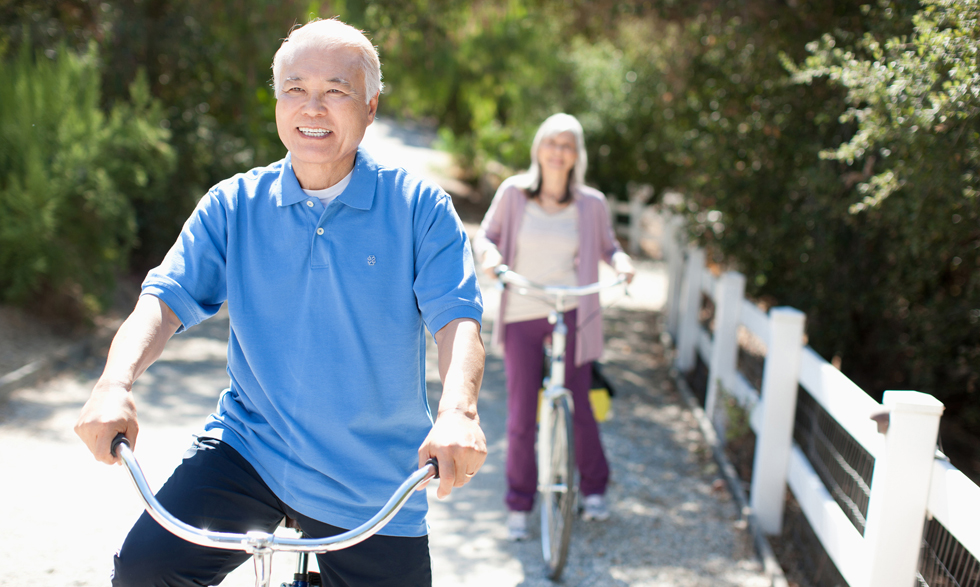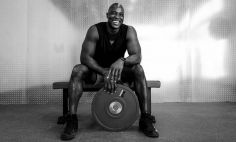Health Topics

Physical exercise
What should you be doing, and how much is enough?
When you hear the word “exercise” you might think about lifting weights or hitting the treadmill to try to lose a few pounds. Weight loss can be one benefit of getting enough physical activity, but there are other important ways that exercise helps you stay healthy – including physical, emotional, and mental benefits.
Regular exercise can help you stay physically healthy by:
- Building strength – stronger muscles help with performing everyday activities
- Helping to manage and even prevent some diseases like arthritis, heart disease, stroke, and type 2 diabetes
- Helping you lose weight or keep you from gaining weight
- Giving you more energy and making you feel less tired
- Enabling you to sleep better
- Helping with balance and preventing falls
Emotional and mental benefits of exercise include:
- Less stress, anxiety, and depression
- Feeling more in control
- Improved self-esteem
- Finding it easier to plan, focus, and shift between tasks
- Enhanced reasoning and thinking
- Possibly lowered risk of developing Alzheimer’s disease
Being active: How much is enough?
Guidance from your healthcare provider can help determine how much activity is right for you based on your lifestyle. Here are some general suggestions:
60 minutes – The amount of daily moderate to vigorous activity children and teens should get. This includes activities like walking, running, and sports that make the heart beat faster. Adults who want to lose or want to maintain weight should aim for this amount as well.
150 minutes – The minimum amount of weekly moderate activity adults should get to stay healthy. Strengthening activities should also be included two or more days a week.
Moderate activity –Some activities include walking, biking, jogging, volleyball, climbing stairs, gardening, raking leaves, and dancing. A good test is to try to talk while doing the activity. Making conversation might be a little more difficult, but you shouldn’t be gasping for air.
Vigorous activity – Some activities include hiking, running, shoveling snow, carrying heavy loads, basketball, soccer, bicycling, and singles tennis. Making conversation should be difficult at this level.
Strength exercises—Some activities include lifting weights using large muscles like in the arms or thighs, using resistance bands, and using your body weight by doing push-ups, pull-ups, crunches, and squats. These exercises strengthen large muscles or make your muscles work harder than usual. Doing these activities at least two days a week can help build strength and keep or increase muscle mass.
The four types of exercise
The best way to get enough physical exercise is to find activities you enjoy doing. Finding different ways to exercise is an important part of staying healthy. Your health care provider might recommend some of the below activities.
Endurance exercises
What it does: Endurance exercises increase your breathing and heartbeat, which improves the health of your heart and lungs.
What to do in the gym: Use the treadmill, stationary bike, rowing machine, or stair climber. If a pool is available, swimming is a great option for individuals worried about their joints.
What to do at home: Go for a brisk walk, jog, bike ride, or hike. Play tennis or basketball with friends. Even routine yard work like mowing or raking can be beneficial. Watch and follow along to a dance workout video online. Climb up and down stairs if available.
Strength exercises
What it does: Strength exercises use body weight or physical weights to improve muscle strength and make everyday activity easier.
What to do in the gym: Find a buddy in the gym to help you safely lift free weights, use weight machines as directed (using machines improperly can cause back injury), or perform body weight exercises.
What to do at home: Get creative. Find exercises that use your own body weight, like squats, push-ups, and crunches. Use resistance bands and weights if available.
Balance exercises
What it does: Balance exercises strengthen the muscles that help keep you upright such as your legs and core. They are especially important for older adults as working on balance helps prevent falls.
What to do in the gym: Join a Tai Chi class or use a balance board, if available.
What to do at home: Stand on one foot or practice walking heel-to-toe.
Flexibility exercises
What it does: Stretching improves the flexibility needed for everyday activities like bending over to pick something up or looking over your shoulder to back your car out of the driveway.
What to do at the gym: Take a yoga class, and use stretching devices like boards and resistance bands.
What to do at home: Do stretches commonly found in yoga or those found online from trusted sources like the Mayo Clinic.
Health hack:
Daily activity can help you get enough physical exercise. Try making little changes like walking when running an errand that’s close to you, parking farther away from your destination, and using the stairs instead of the escalator or elevator when possible.





